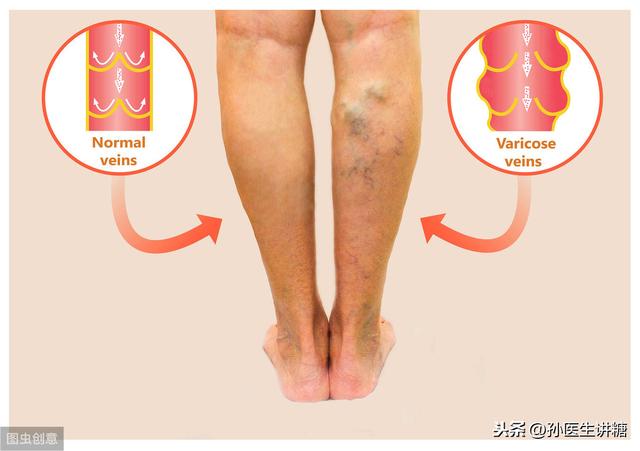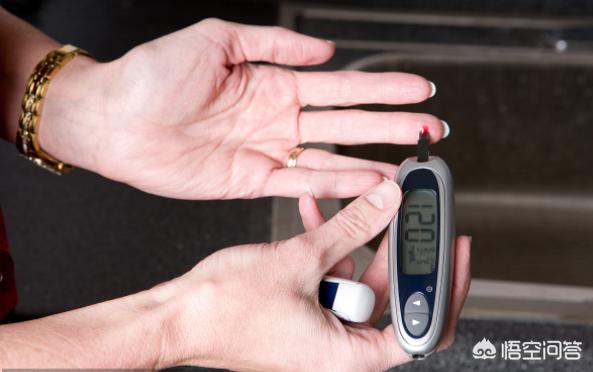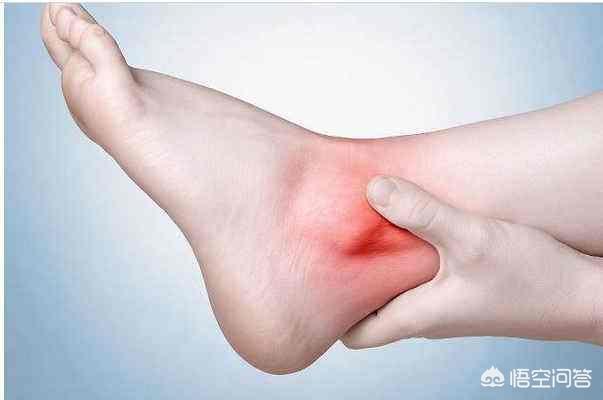Why do people with high blood sugar have leg pain and a large swelling on the top of the foot?
There are several possibilities for diabetic lower limb swelling and pain, first of all, we need to know how long the patient's disease duration, if it is more than ten years, and is the first to start numbness, and then transformed into mild pain, and then slowly aggravated to severe pain, and accompanied by the skin from the toes began to turn black, the simultaneous onset of the lower limbs of both, it can be judged as an advanced complication of diabetes, that is, the diabetic foot. If you have diabetes for a short time, and unilateral onset, redness, swelling and pain, may be due to diabetes complications of low immunity, or trauma, bacterial infections caused by antibiotic treatment can be improved. There are also lower extremity venous reflux obstruction, lymphatic vessel blockage, etc., can also cause swelling and pain in the lower extremities, found that these problems have to enter the hospital for examination and treatment.
A diabetes specialist answers the question.
There are many reasons why patients with high blood sugar may experience painful swelling of the lower extremities.
Long-term high blood glucose will appear lower extremity vascular lesions, such as lower extremity blood vessels, occlusion, etc., this situation will appear lower extremity pain, intermittent claudication, that is, after walking for a period of time the lower extremities will be painful, after resting for a period of time will be alleviated. The shorter the distance traveled, the more serious the lesion of the blood vessels of the lower limbs.
It can also be combined with diabetic peripheral neuropathy, which is characterized by numbness in the limbs, abnormal sensations such as coolness, heat, ants, and in some cases pain. Painful diabetic peripheral neuropathy is a relatively common clinical reason for consultation. Because other abnormal sensations patients may not pay much attention to, but the pain is not the same, and this pain is mostly at night, so that sleep will be significantly worse.

People with high blood sugar are usually combined with obesity, hyperuricemia, if overeating, drinking or using too much purine-containing food, the body's uric acid rises sharply, it will form uric acid crystals in the joints, resulting in gouty attacks, the attack site is usually the toes, the heel, the knee joints and other parts of the body, the pain is more intense, and there will be redness, swelling and heat pain is more obvious.
Patients who have a combination of abnormal cardiac function and heart failure may develop depressed swelling of the lower extremities, a condition that indicates a more pronounced cardiac lesion that may require medication.
There may also be a combination of varicose veins, when there is a lower extremity venous embolism patients will also be swollen and painful lower extremities, but the lower extremities generally have more obvious venous tortuous earthworm mass-like manifestations.
In conclusion there are many reasons why lower limb pain and swelling may occur in diabetic patients, and it is important to go to the hospital for appropriate examination and treatment. Smoothing out blood sugar is very important to reduce the incidence of complications and severity of comorbidities.
There are three keywords in this question, high blood sugar, leg pain, and swelling.
I have elderly diabetics in my family, plus I studied nutrition in college, so I know a little bit more about diabetes and the 3-high area.
We need to know that long-term high blood sugar will attack blood vessels over time, causing lower extremity vasculopathy, diabetic foot and so on. Especially smoking, drinking, obesity, too little exercise diabetic patients, the probability of lower extremity vasculopathy is often higher. When patients have leg pain and swelling in the lower body, it is likely to be a sign of sugar foot and uncontrolled blood sugar!得Go to the hospital early to get professional help, do not delay and think that the disease will get better on its own if you put it off for a few days, because delays are likely to continue to worsen the condition or lead to diabetic foot. Diabetic foot is very difficult to treat and can lead to amputation and the survival rate after amputation is not high.

For diabetics, you need to get into the habit of monitoring your blood glucose regularly and going to the hospital for regular rechecks, so that you are aware of your blood glucose situation. Don't be too indulgent in your diet and life, eat everything but not too much. If you control your blood sugar well, you don't have to worry too much about complications. My grandma, who has diabetes in her 70s, is now relatively healthy except for her eyes, which are not so good!
I'm Yuxin Huang, a hearing aid dispenser, and also a public dietitian, specializing in hearing health and health of middle-aged and elderly people, I just opened the headlines and Wukong Q&A, I hope to communicate more with you here~
Thanks for the invite.
This may not be just a simple high blood sugar, patients with diabetes should be checked quickly, this situation is likely to be diabetes left too long without timely treatment and relief, which led to diabetes combined with nephropathy.
Diabetic patients with body pain or swelling may be diabetic patients with complications, such as diabetes mellitus combined with nephropathy, is the most common cause of edema, diabetic nephropathy is also one of the more common complications of diabetes mellitus. You can observe whether your urine is proteinuria, which is a relatively common manifestation of diabetic nephropathy. In diabetic nephropathy, the endothelial cells between the glomeruli and tubules are arranged in a gap will increase, so in the filtration process may be inverted in the loss of protein in the urine, which leads to the situation of proteinuria. If the kidneys continue to lose a large amount of protein and the kidney function continues to decline, it will lead to water and sodium retention in the body, and it may cause edema.
Diabetic patients with foot pain or pain in the extremities of the body is also very common, diabetic patients with poor blood sugar control at all times, the blood is filled with glucose is higher, the flow through the blood vessels may be scratched, not only will make the blood vessel wall lipoproteins build up in large quantities, inducing other complications, but also may make some of the fine blood vessels are damaged, diabetes in the late stage may cause the microvessels to become narrower, leading to peripheral neuropathy, causing "Peripheral neuritis", mainly because of the lack of peripheral blood circulation, should be treated promptly. Peripheral neuritis may lead to very serious foot and leg pain, such as walking feeling a pins and needles sensation, pain is difficult to get off the foot, the later serious cases may also lead to the limb ends can not supply sufficient blood flow and ulceration, leading to diabetic foot and other serious diseases. Diabetic patients may also feel more pain because of their own blood sugar rise, more nerves in the legs and feet, feel the stimulation is more pronounced, so the pain will generally be felt by the feet, the end of the hand.

First of all, diabetic nephropathy and peripheral neuritis are the result of diabetic patients who have been suffering from the disease for a long time, or diabetic patients who do not pay attention to controlling their blood sugar. If diabetes is diagnosed and treated in a timely manner, daily active control of blood glucose, healthy diet, regular work and rest, with the doctor's medication or insulin injections, as long as the blood glucose remains stable and the glycated hemoglobin value is good, in fact, it is possible to prevent the complications of diabetes. If the above situation continues to deteriorate, it may really lead to diabetic foot, and the blood sugar will be further uncontrollable, and eventually there is a risk of amputation. So does this patient with high blood sugar think that he can just rely on diet control to regulate his blood sugar without receiving treatment, or he is not in control of his daily diet and does not always monitor his blood sugar to stabilize it? Be sure to control your blood sugar as soon as possible, do not let the condition further deteriorate down the road.
This question and answer are from the site users, does not represent the position of the site, such as infringement, please contact the administrator to delete.